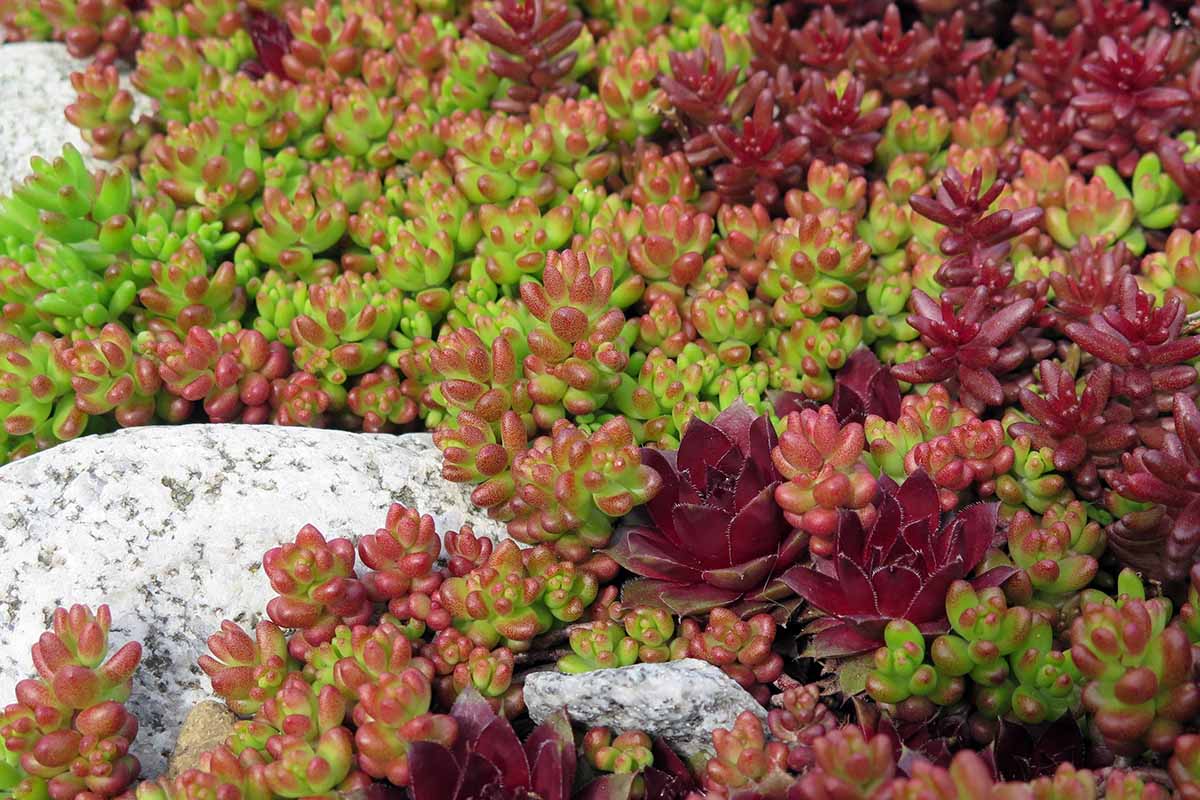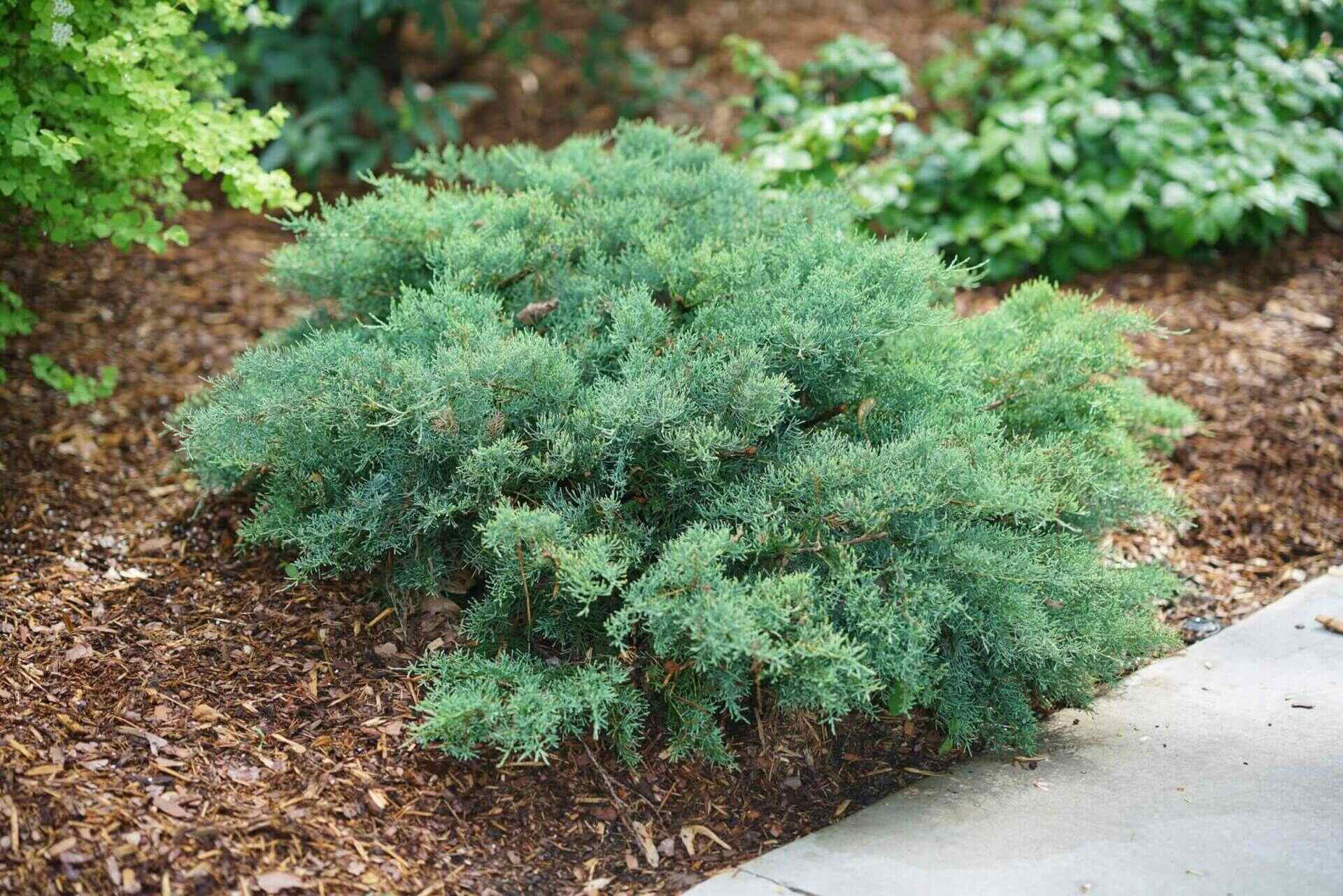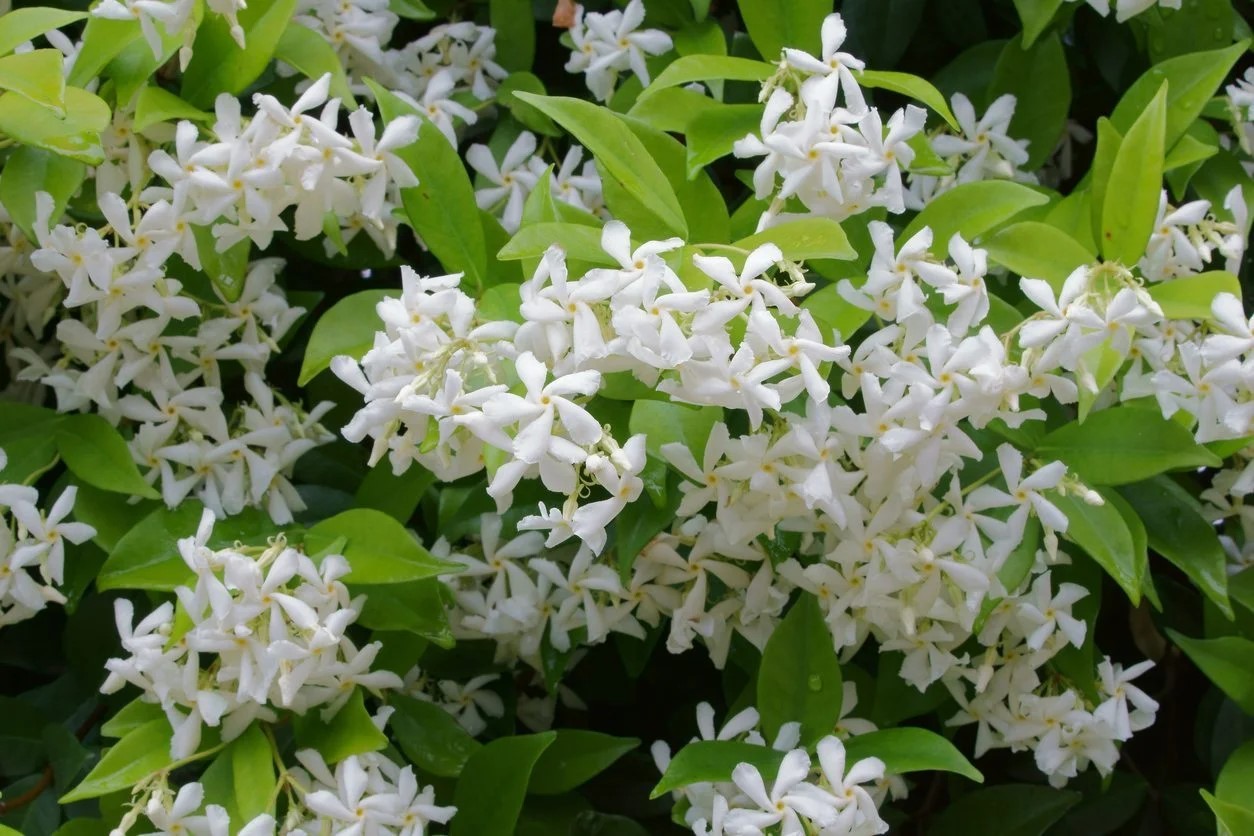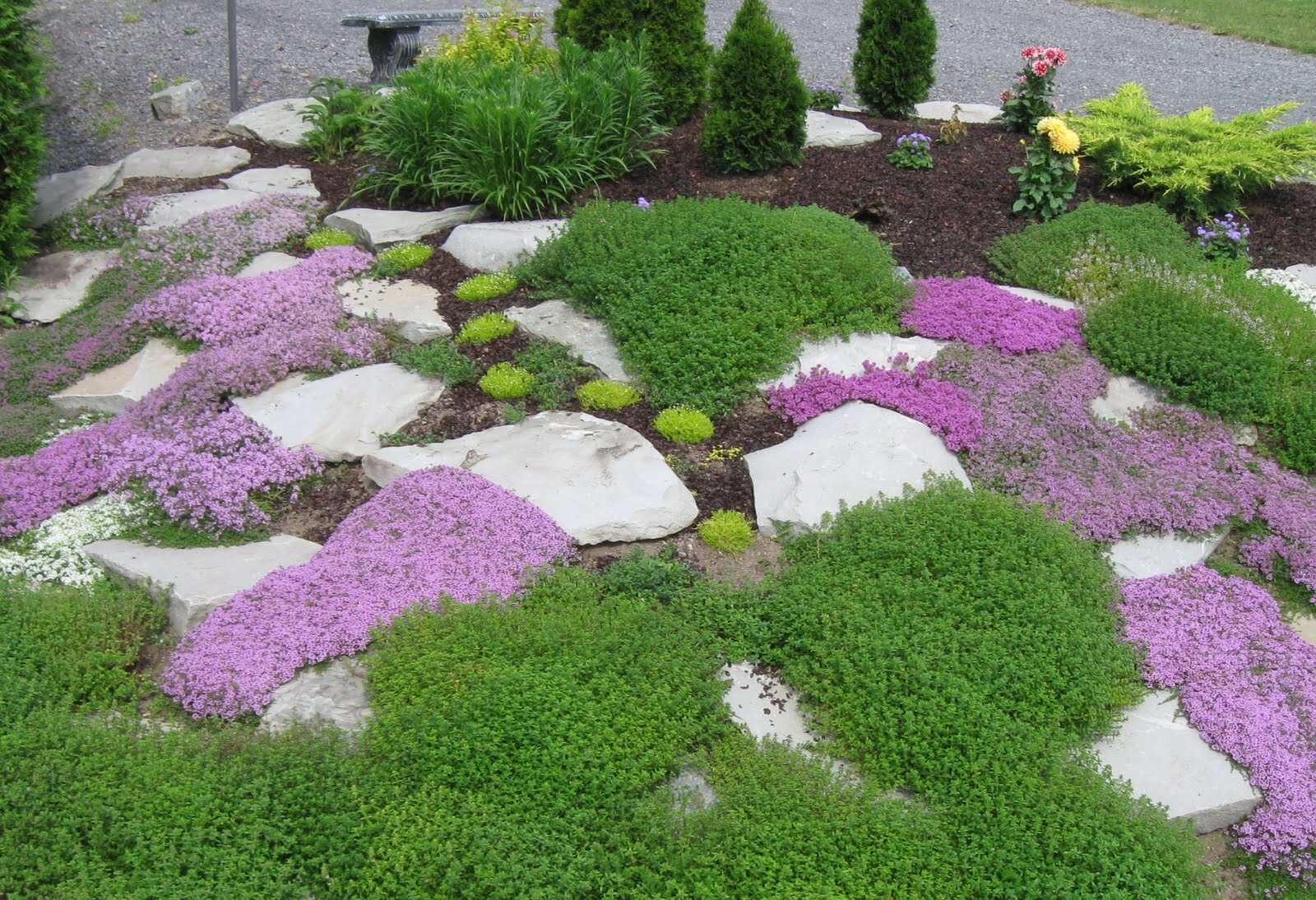Home>Garden Essentials>How To Plant Succulent Ground Cover


Garden Essentials
How To Plant Succulent Ground Cover
Modified: March 7, 2024
Learn how to plant succulent ground cover in your garden and create a beautiful and low-maintenance landscape.
(Many of the links in this article redirect to a specific reviewed product. Your purchase of these products through affiliate links helps to generate commission for Storables.com, at no extra cost. Learn more)
Introduction
Welcome to the world of succulent ground covers! If you’re looking for a beautiful and low-maintenance option to enhance your garden, succulent ground covers are an excellent choice. These versatile plants not only add aesthetic appeal but also provide various practical benefits.
Succulent ground covers are known for their thick, fleshy leaves, which store water, making them highly drought-tolerant. This characteristic makes them perfect for areas with limited water availability or for gardeners who want to conserve water.
Choosing the right succulent ground cover can transform your garden into a vibrant and captivating space. With a wide variety of shapes, colors, and textures available, you can create a unique and visually stunning landscape.
In this article, we will guide you through the process of selecting, planting, and maintaining succulent ground covers. Whether you’re a seasoned gardener or a beginner, you’ll find valuable tips and insights to help you successfully grow these delightful plants.
So let’s dive in and discover the wonders of succulent ground covers!
Key Takeaways:
- Choose the right succulent ground cover by considering climate, light, growth habit, soil type, and colors to create a vibrant and thriving garden.
- Properly prepare, plant, water, and maintain your succulent ground cover to enjoy a low-maintenance, visually stunning landscape.
Read more: How To Plant Lantana Ground Cover
Choosing the Right Succulent Ground Cover
When it comes to choosing the right succulent ground cover for your garden, there are a few important factors to consider. Let’s explore these factors to ensure you make the best choice:
- Climate: The climate of your region will play a significant role in determining which succulent ground cover is suitable for your garden. Some species thrive in hot and arid conditions, while others prefer cooler and more temperate climates. Research the ideal climate conditions for the succulent ground cover you are interested in before making your selection.
- Light Requirements: Succulents generally love bright sunlight, but specific species may have different light requirements. Some ground covers prefer full sun exposure, while others can tolerate partial shade. Assess the light conditions in your garden and choose the succulent ground cover that will thrive in that environment.
- Growth Habit: Consider the growth habit of different succulent ground covers. Some spread rapidly and form dense mats, while others grow more upright and clump together. Determine the desired coverage and look you want for your garden and select a ground cover that fits those preferences.
- Soil Type: Succulents generally prefer well-draining soil that allows excess water to escape. Before planting, assess your soil type. If you have heavy clay soil, consider amending it with organic matter or creating raised beds to improve drainage. Alternatively, if you have sandy soil, select a ground cover that can tolerate drier conditions.
- Color and Texture: One of the most exciting aspects of succulent ground covers is their wide range of colors and textures. From vibrant greens to stunning purples, and smooth leaves to spiky rosettes, you have countless options to add depth and visual interest to your garden. Consider the overall color scheme and aesthetics of your outdoor space when choosing your succulent ground cover.
By considering these factors, you can select the perfect succulent ground cover for your garden. It’s essential to choose a species that aligns with your climate, light, growth habit, soil type, and desired colors, so that your ground cover thrives and enhances the beauty of your garden.
Preparing the Soil
Before you start planting your succulent ground cover, it’s crucial to prepare the soil properly. This will ensure optimal growth and help prevent common issues like root rot or poor drainage. Here are the steps to prepare the soil for your succulents:
- Remove Weeds: Start by clearing the area of any existing weeds or unwanted vegetation. These can compete with your succulent ground cover for resources like water and nutrients, so it’s important to remove them to give your plants the best chance to thrive.
- Improve Drainage: Succulents need well-draining soil to avoid waterlogged roots, which can lead to root rot. If you have heavy clay soil that tends to retain water, consider amending it with organic matter like compost or perlite. This will help improve drainage and prevent water from sitting around the roots of your succulents.
- Test pH Levels: Succulents generally prefer slightly acidic to neutral soil pH levels. Testing the pH of your soil can help you determine if any adjustments need to be made. You can use a soil pH testing kit available at garden centers or send a soil sample to a professional laboratory for analysis.
- Amend the Soil: Based on the results of your soil pH test, you may need to amend the soil to adjust the pH. If the soil is too acidic, adding lime can help raise the pH. On the other hand, if the soil is too alkaline, you can lower the pH by incorporating elements like sulfur or peat moss.
- Add Organic Matter: Incorporating organic matter into the soil will improve its texture, water-holding capacity, and nutrient content. You can add well-rotted compost, aged manure, or other organic materials to enrich the soil. Mix these amendments thoroughly with the existing soil to create a balanced and nutrient-rich growing medium.
By following these steps to prepare the soil, you are setting your succulent ground cover up for success. Ensure that the soil is well-draining, has a suitable pH level, and has been enriched with organic matter. These preparations will provide a healthy foundation for your succulent plants to grow and thrive.
Planting Succulent Ground Cover
Now that you have prepared the soil, it’s time to plant your succulent ground cover. Follow these steps to ensure a successful planting process:
- Choose the Right Time: It’s best to plant succulent ground covers during the spring or fall when the temperatures are moderate. Avoid planting during the extreme heat of summer or the freezing cold of winter, as these conditions can stress the plants.
- Space the Plants: Consider the specific spacing requirements for your chosen succulent ground cover. Some species spread rapidly, while others require more space to grow. Refer to the plant’s label or conduct research to determine the appropriate spacing for optimal coverage.
- Dig the Holes: Dig individual holes for each plant, making sure that they are wide and deep enough to accommodate the root system. The holes should be slightly larger than the nursery pots, allowing room for the roots to expand and grow.
- Remove the Plants from Containers: Gently remove the succulent ground cover plants from their nursery pots, being careful not to damage the roots. If the roots are tightly bound, you can gently loosen them to encourage better growth and establishment.
- Place the Plants: Set each plant into its respective hole, making sure that it sits at the same level as it was in the nursery pot. Ensure that the plant is centered and upright, and adjust its position if necessary.
- Backfill the Holes: Carefully backfill the holes with the soil mixture, gently firming it around the roots of the plants. Avoid compacting the soil too much, as this can hinder water drainage. Leave a slight depression around each plant to capture and direct water to the roots.
- Water Thoroughly: After planting, give the succulent ground cover a thorough watering to help settle the soil and encourage root establishment. Water until the soil is evenly moist but not soaked. Subsequent watering will depend on the specific water needs of your succulents and the climate conditions.
Remember to follow any additional planting instructions specific to the succulent ground cover you have chosen. Each species may have unique requirements, so it’s essential to research and understand the specific needs of your plants.
With these steps, you can confidently plant your succulent ground cover and watch it take root and thrive in your garden. Keep in mind that patience and regular care will be key as your ground cover establishes and fills in the space, creating a carpet of vibrant succulents.
When planting succulent ground cover, make sure to choose a well-draining soil mix and plant in a sunny location. Water sparingly to avoid root rot.
Watering and Fertilizing Succulent Ground Cover
Proper watering and fertilizing practices are crucial for the health and vitality of your succulent ground cover. Since succulents are known for their water-storing capabilities, it’s important to strike the right balance to prevent both under and over watering. Here’s what you need to know:
Watering:
- Establishment Period: During the first few weeks after planting, succulent ground covers may require more frequent watering to help them establish their root systems. Water deeply but infrequently, allowing the soil to dry out between waterings. This will encourage the roots to grow deeper in search of water.
- Watering Frequency: Once established, succulent ground covers generally prefer drier conditions. Allow the soil to thoroughly dry out between waterings. Depending on the climate and specific succulent species, this may mean watering once every few weeks or even once a month.
- Watering Technique: When watering, aim to saturate the soil around the root zone. Avoid overhead watering, as this can lead to excess moisture on the foliage and increase the risk of rot. Instead, use a watering can or a drip irrigation system to deliver water directly to the soil.
- Monitor Moisture Levels: Succulents can be sensitive to excessive moisture. Regularly check the moisture levels of the soil by inserting your finger into the soil. Water only if the soil feels dry at a depth of 1-2 inches. Be cautious not to overwater, as this can lead to root rot and other issues.
Fertilizing:
- Minimal Fertilization: Succulent ground covers generally require minimal fertilization. These plants are adapted to nutrient-poor soils and can thrive without regular fertilizers.
- Slow-Release Fertilizers: If you feel your succulent ground cover may benefit from some extra nutrients, opt for a slow-release organic fertilizer. These fertilizers gradually release nutrients over time, providing a gentle feeding for your plants.
- Dilute Liquid Fertilizers: If using liquid fertilizers, dilute them to half-strength or even less. Succulents are sensitive to concentrated fertilizers and can suffer from fertilizer burn if applied too heavily.
- Apply Fertilizer Sparingly: Apply fertilizers sparingly, following the package instructions, and avoid direct contact with the succulent foliage. Water the plants thoroughly after fertilizing to prevent any potential salt build-up in the soil.
Remember, succulent ground covers have adapted to survive in nutrient-poor environments. Overfertilizing can lead to excessive growth, weak stems, or even damage to the plants. It’s better to provide slightly less fertilizer than too much.
By following these watering and fertilizing practices, you can help your succulent ground cover thrive and maintain its natural beauty and resilience.
Read more: How To Plant Vinca Ground Cover
Maintaining Succulent Ground Cover
Maintaining your succulent ground cover is essential to ensure its long-term health and appearance. While these plants are generally low-maintenance, they still require some care to keep them looking their best. Here are some tips for maintaining your succulent ground cover:
- Regular Inspections: Take the time to regularly inspect your succulent ground cover for any signs of pests, diseases, or damage. Look for any discoloration, spots, or abnormal growth. Early detection can help you address issues promptly and prevent them from spreading to other plants.
- Remove Weeds: Keep the area around your succulent ground cover free of weeds. Weeds not only compete with your plants for nutrients and water but can also provide hiding places for pests. Regularly pull out any weeds that may appear, taking care not to disturb the roots of your succulents.
- Pruning: Although succulent ground covers typically don’t require extensive pruning, occasional trimming can help maintain their shape and promote healthy growth. Remove any dead or damaged leaves, and trim back any leggy or overgrown branches. Always use clean, sharp pruning tools to avoid injuring the plants.
- Propagation: If you want to expand your succulent ground cover or create new plants, propagation is an excellent option. Many succulents can be easily propagated through stem cuttings or by separating offsets. Follow proper propagation techniques and provide the new plants with appropriate care to ensure their successful establishment.
- Protection from Extreme Weather: During periods of extreme weather, such as heatwaves or frost, it’s crucial to protect your succulent ground cover. Use shade cloth or provide temporary shelter during scorching hot days. Cover the plants or move container-grown succulents indoors during frost spells to prevent damage. Protecting your plants from harsh conditions will help maintain their health and appearance.
- Schedule Minimal Irrigation: Succulent ground covers are adapted to survive in arid conditions with minimal water requirements. As such, it’s important to practice water conservation and irrigation management. Only water when necessary, allowing the soil to dry out between waterings. Adjust your watering schedule based on the specific needs of your succulent species and the prevailing weather conditions.
- Mulching: Applying a layer of organic mulch around your succulent ground cover can help conserve moisture, regulate soil temperature, and suppress weed growth. Use a thin layer of mulch, such as wood chips or gravel, taking care not to cover the stems or leaves of the succulents.
By incorporating these maintenance practices into your gardening routine, you can ensure that your succulent ground cover remains healthy, attractive, and resilient. Remember to observe your plants closely, provide protection when needed, and adjust your maintenance tasks based on the specific requirements of your succulent species.
Troubleshooting Common Issues with Succulent Ground Cover
While succulent ground covers are generally resilient, they can still encounter a few common issues. By being aware of these problems and implementing appropriate solutions, you can keep your succulents healthy and thriving. Here are some common issues you may encounter and how to troubleshoot them:
- Overwatering: One of the most common mistakes with succulents is overwatering. Too much moisture can lead to root rot and other fungal diseases. To resolve this issue, adjust your watering frequency and ensure that the soil is dry before watering again. Also, check that your pots or planting beds have proper drainage to prevent water from sitting around the roots.
- Underwatering: On the other hand, underwatering can cause succulents to become dehydrated and shriveled. If you notice that your succulent ground cover looks dry and withered, increase your watering frequency. Remember to water deeply so that the water reaches the roots, and aim to mimic their natural growing conditions.
- Pests: Succulents are not immune to pests like aphids, mealybugs, and spider mites. If you spot these unwanted visitors on your plants, you can try using insecticidal soap or neem oil to control the infestation. Additionally, you can physically remove pests by wiping leaves with a damp cloth or using a gentle spray of water. Regularly inspect your plants for signs of pest activity and take prompt action to prevent further damage.
- Diseases: Poor growing conditions or incorrect watering practices can make succulent ground covers susceptible to diseases such as root rot or fungal infections. To prevent diseases, ensure that the soil has good drainage, avoid overhead watering, and provide adequate airflow around the plants. If you notice any signs of disease, remove the affected parts and treat with a suitable fungicide if necessary.
- Sunburn: While succulents love bright light, intense sunlight can sometimes cause sunburn. This typically appears as brown patches or lesions on the leaves. To prevent sunburn, gradually expose your succulent ground cover to increased sunlight, especially if they were previously grown in shade. Provide some shade during the hottest part of the day, or move pots to a location with filtered sunlight.
- Improper Soil Conditions: Succulents require well-draining soil to prevent root rot. If you notice that your plants are not thriving or the soil is constantly damp, it may be a sign of poor soil conditions. Amend the soil with organic matter to improve drainage or consider repotting your plants in a more suitable growing medium.
Remember, prevention is key when it comes to addressing common issues with succulent ground covers. Providing the right growing conditions, monitoring your plants regularly, and taking prompt action can help keep these issues at bay. By troubleshooting and addressing problems early on, you can ensure the long-term health and beauty of your succulent ground cover.
Conclusion
Congratulations! You have now learned how to successfully plant and maintain a beautiful succulent ground cover in your garden. By choosing the right succulent species, preparing the soil adequately, and following proper care techniques, you can create a visually stunning and low-maintenance landscape.
Remember to consider the climate, light requirements, growth habit, soil type, and desired colors when selecting your succulent ground cover. Each factor plays a crucial role in ensuring the success of your plants. Take the time to research and choose the best options for your specific garden conditions.
Preparing the soil is essential to provide the foundation for your succulent ground cover to thrive. Clearing weeds, improving drainage, and amending the soil with organic matter will contribute to healthy plant growth and prevent common issues like root rot.
When it’s time to plant, ensuring proper spacing, digging suitable holes, and gently handling the plants will promote successful establishment. Remember to water thoroughly after planting and adjust your watering schedule based on the specific needs of your succulents and the prevailing weather conditions.
Maintaining your succulent ground cover involves regular inspections, weed removal, occasional pruning, and protection from extreme weather conditions. Monitoring and adjusting your watering and fertilizing practices will help your plants stay healthy and vibrant.
If common issues like overwatering, underwatering, pests, diseases, sunburn, or improper soil conditions arise, take prompt action to address them and prevent further damage. Remember that prevention is key, and maintaining a healthy growing environment for your succulent ground cover is crucial to their long-term success.
In conclusion, cultivating a magnificent succulent ground cover requires a combination of knowledge, care, and observation. With patience and attention to detail, you can create a mesmerizing landscape full of unique textures and colors, all while enjoying the low-maintenance nature of these incredible plants.
Now, go forth and unleash your creativity with succulent ground covers, transforming your garden into a magical oasis!
Frequently Asked Questions about How To Plant Succulent Ground Cover
Was this page helpful?
At Storables.com, we guarantee accurate and reliable information. Our content, validated by Expert Board Contributors, is crafted following stringent Editorial Policies. We're committed to providing you with well-researched, expert-backed insights for all your informational needs.















0 thoughts on “How To Plant Succulent Ground Cover”